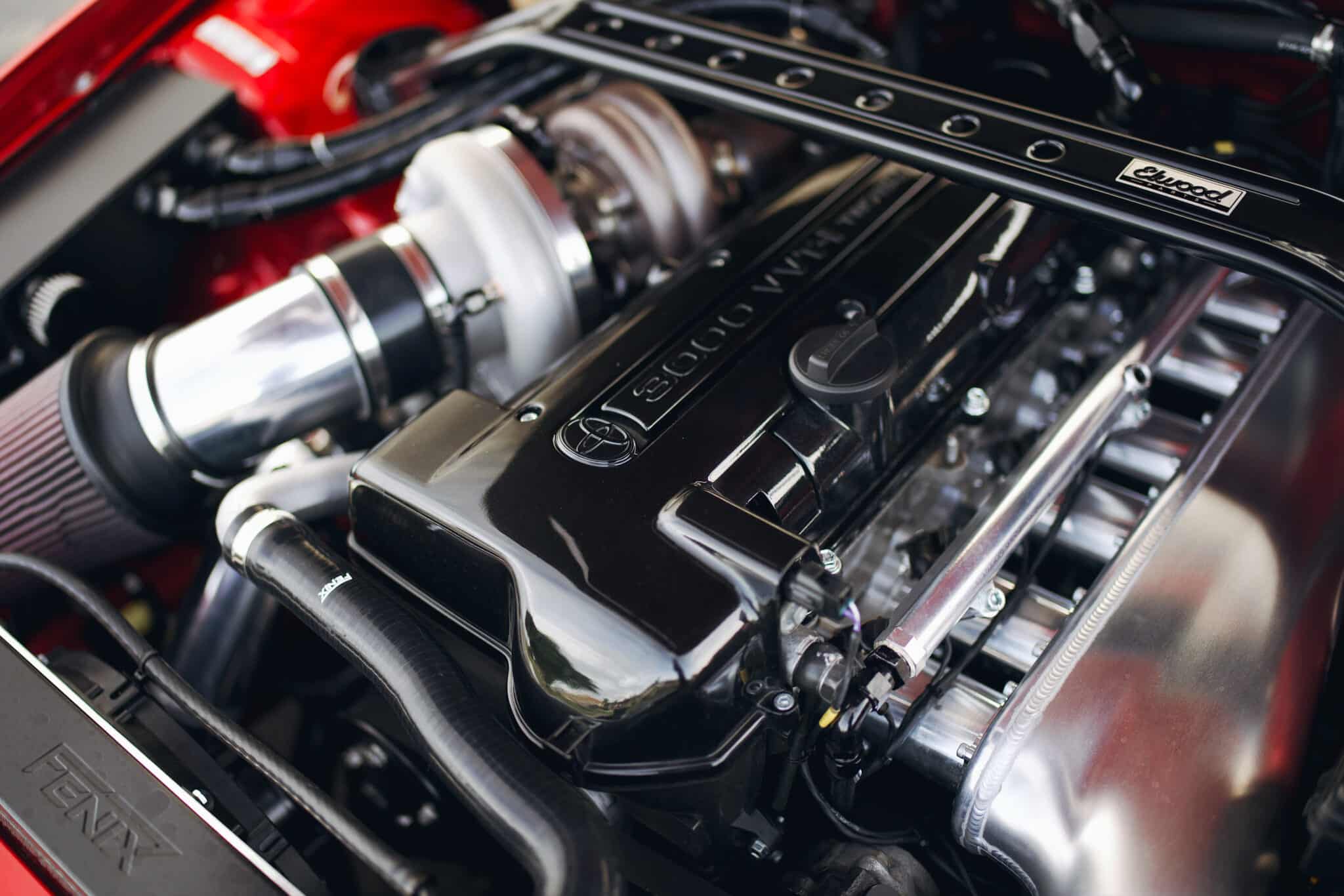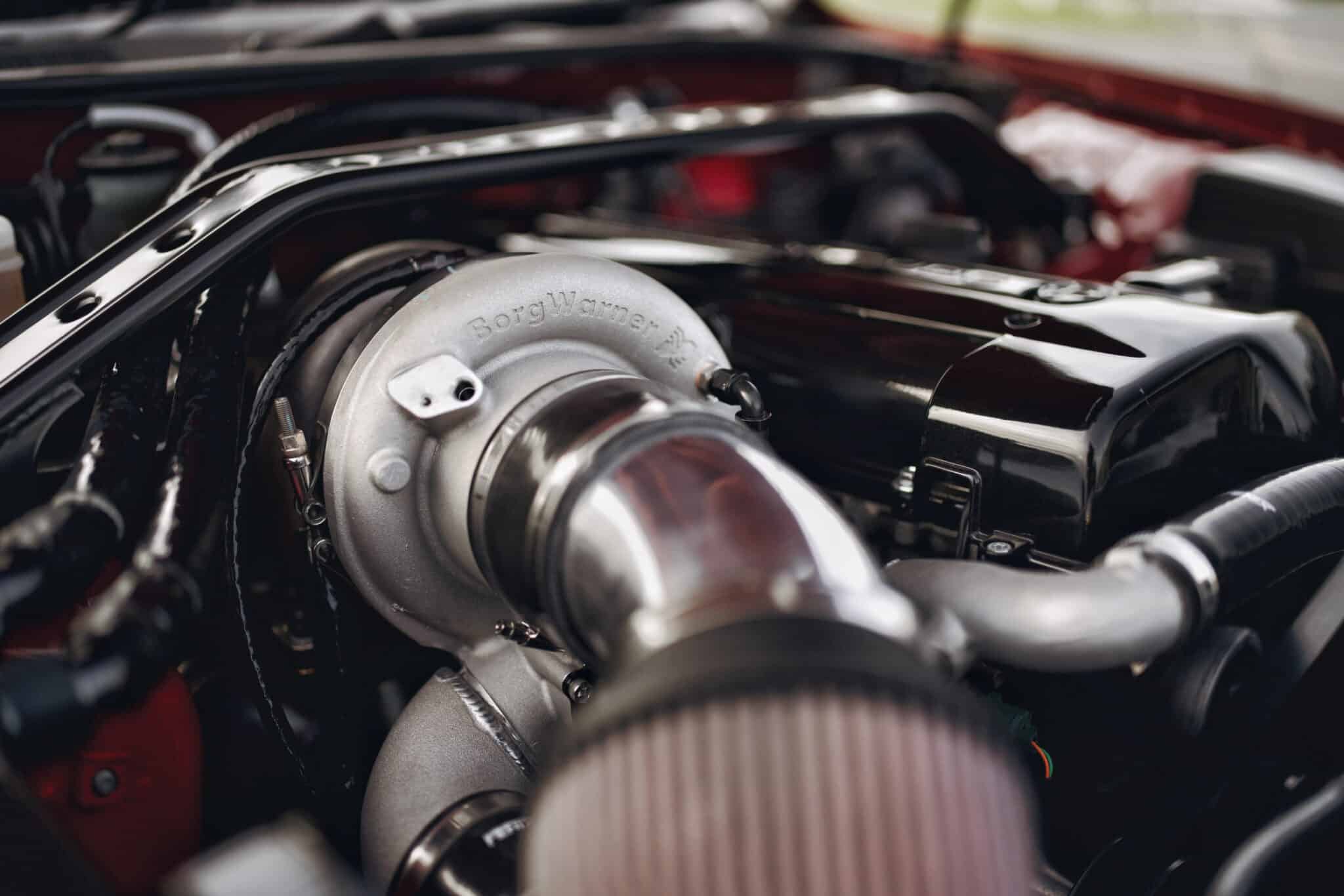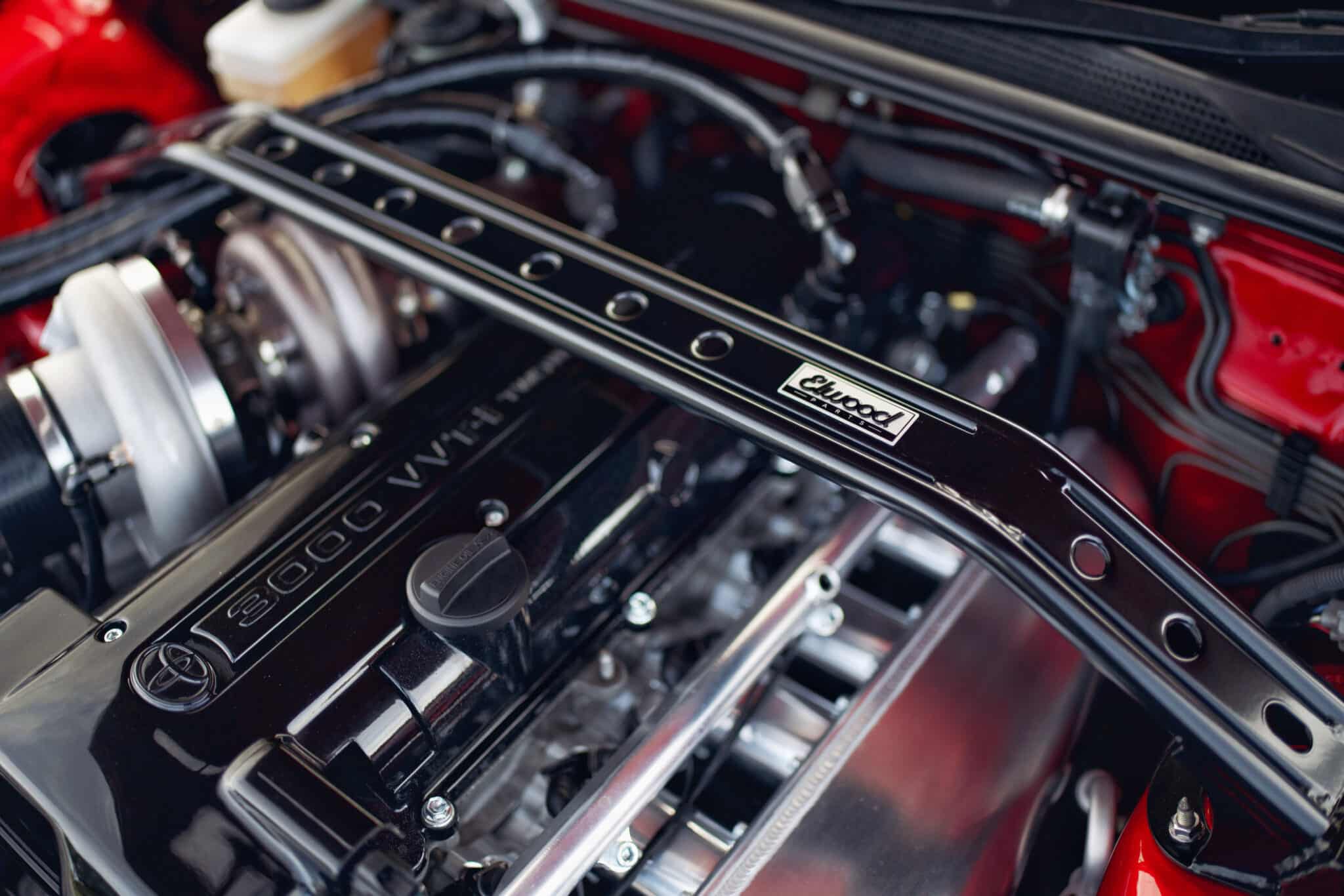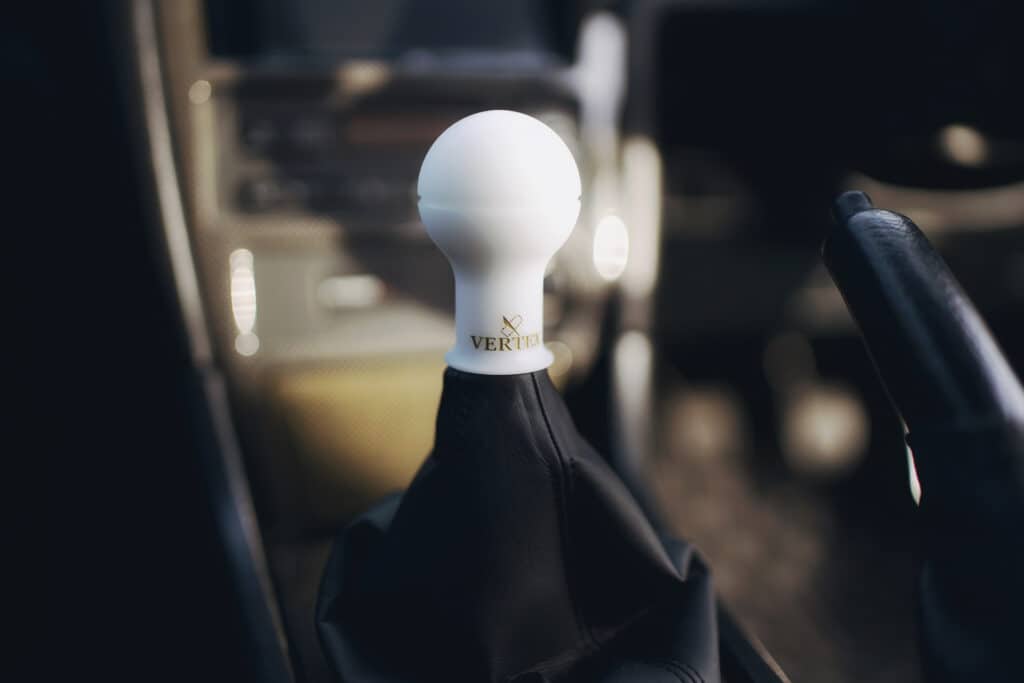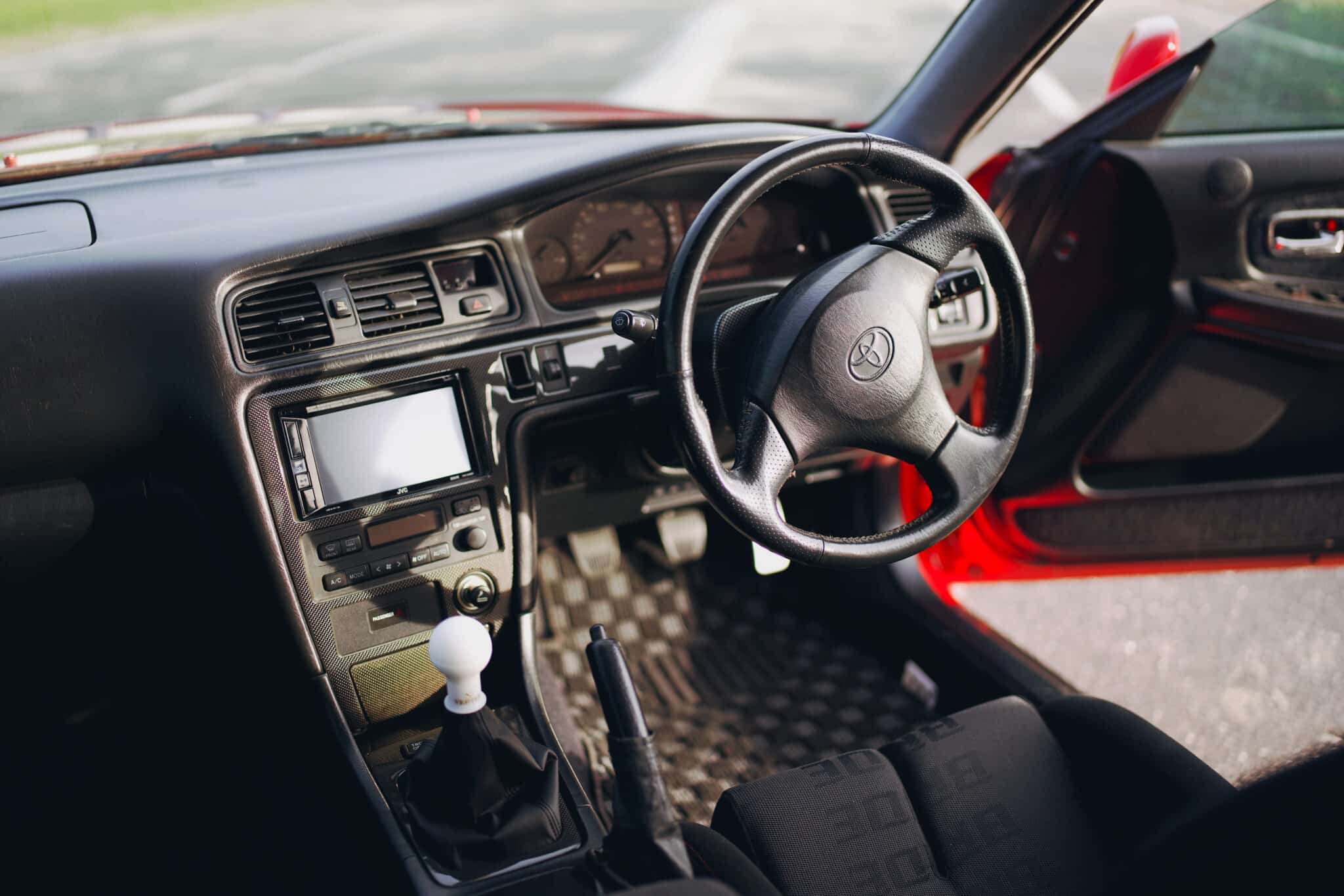Words: Warren Sare Photos: Archee Lal
It’s not every day that we get thrown the keys to a legitimate monster, let alone a cover-worthy one, but when this writer made inquiries about coming to take a look to see what might inspire my story, the response I got from Fenix’s manager, Ben, was, “Bro, just pop down and take it for a drive.” The best part about this was finding out that the owner, Adrian, was actually in China at the time and had no idea, but it seemed like a good plan to Ben and me.
I pulled up to the shop in the heart of industrial East Ta¯maki, and sitting out front of the showroom full of anything your performance car could need to keep cool was something that can perhaps best be described as the automotive equivalent of a bodybuilder. Everywhere you look on this JZX100 Toyota Chaser, there are bulges, lines, and carbon bits, all coated in Soul Red. It’s so distinctive that it’s hard to tell if it is cool, ugly, or equal parts of both, and that is the point here: it’s meant to grab your attention! What else do you want in a car that is built as a rolling test showcase of your available products?
Under the article title, we told you that this is a 520kW 2JZ monster. If that doesn’t mean much to you, well, that’s more than double your average performance car — if not triple. Oh, and it’s also rear-wheel drive, and this thing rolls around the streets. I’ll be honest here in saying that the experience is a bit cartoon-like. You insert the key into the ignition, and the car slowly grumbles to life, but at this point, nothing is really happening; it sits there idling away with perhaps a slightly louder than normal six-cylinder engine note coming from the custom stainless-steel 3.5-inch exhaust system.
After a few minutes, the beast within starts to wake up, and — I kid you not — if you remember the scene from that movie franchise where the muscle car shakes side to side, that is what happens as temp comes up and ‘NOHEAT’ gets ready to unleash its fury on what, on this day, are damp streets. This is just silly; I’m only sitting in the car and it’s physically shaking side to side just idling.
I ease the clutch in and instantly feel that weight and resistance through the clutch pedal that comes with a serious build. Toyota’s beloved 2JZ heart, when filled with Nitto Rods and CP pistons, is probably as bulletproof as you can get in a street set-up, and when it has a big BorgWarner EFR8474 strapped to the side of it, it’s a recipe for disappearing gears and hazed tyres right through the gearbox. The head has benefited from a port and polish, with a set of New Zealand–made Kelford Cams expertly dialled in. JT Performance knows a thing or two about getting the mixtures right in these set-ups, and there is plenty of induction noise to be heard. That is, of course, if you can focus on it over your own elevated heart rate as you try to keep the big Toyota from swapping ends on you and working your way through the R154 gearbox.
A Haltech 2500 has been installed with a JT Performance loom, as it made sense to do this when the car was converted from the 1JZ it originally came with. The engine bay is clean, functional, and screams road-going racer, with the Hypertune intake still shiny like new and a big 60mm wastegate trying to keep the 24psi of boost under control. As you’d expect, if Fenix stocks it, it has been fitted here, and everything you see, you can buy. I find myself enjoying the almost simplistic and classy feel of the bay with subtle black in use against the polished parts.
Did I mention that I’m actually sweating? I’m genuinely nervous about trying not to damage a car that far more qualified pilots than me say is simply ‘mental’ — to use a crude expression. It is physically a big car in which you sit quite low. It’s got a massive custom body kit, and even though it’s shod in semi-slick tyres, I just don’t feel like I am anything more than a cowboy trying to tame a high-horsepower bucking bull that wants to throw me from the confines of the snug Bride racing seat. (I will fully admit at this point that I didn’t get anywhere near the limits, as I didn’t want to end up owning the car if something did go wrong. It’s cool to be trusted to experience something like this, but there is also a time and place, and I feel like that time and place would warrant a helmet and race suit.)
When you’ve got this sort of power on tap, you better make sure you can stop — and quickly! So it’s somewhat reassuring to give the six-piston callipers a quick dab just to feel the bite and know that whatever silly speed is capable of being achieved is also able to be scrubbed. NOHEAT is no lightweight, and to aid in remaining engaged with the tarmac, a set of Tein coilovers is employed, along with Hardrace and Cusco upgrades throughout.
I step out of the car back at the yard, and I find myself pondering the overall picture as I wait for the heart rate to come back down again. Many of us have been in fast cars, but this is at the upper level of that bracket. I’m looking at the Kazama Promode wide-body kit when an older gent in a high-vis walks over and says to me, “WTF is that thing?” I tell him it’s a Toyota, and he stares at me with a ‘doesn’t look like any Camry or Corolla I’ve ever seen’ look. Again I say, “It’s a Toyota, mate, a very, very modified one, and it’s very fast.” He wanders off shaking his head, and I continue simply looking at the car, because it just is one of those rides.
If there is more of a cult Japanese wheel than the Work Meister, I can’t tell you what it is. The three-piece 18-inch rims do their best to fill out the muscular guards and measure up at 9.5 inches in the front and 10.5 inches in the rear. Normally, I’d class these as large, but they look quite proportional to the car, or perhaps even small against the current trends. As a mobile billboard, I’d suspect there is probably a fine line being walked, and it’s not like the body kit and engine noise don’t already turn heads.
It might well be called NOHEAT, but that’s probably about as honest as the owner saying he is 19. This is one hell of a street-going missile that more than turns up the temperature, and then, as is its job, showcases exactly how Fenix products can help bring it down.
_________________________________________________________________________________________________
This article originally appeared in New Zealand Performance Car issue 303










